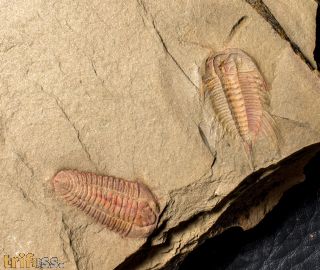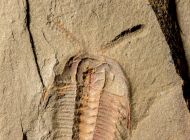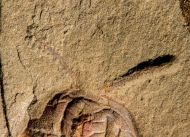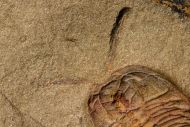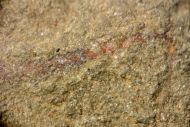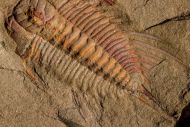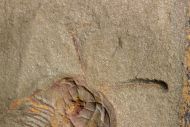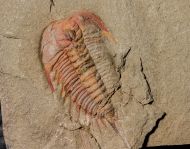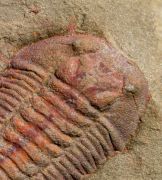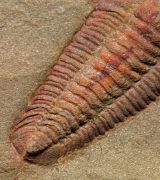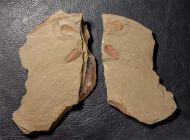Fossilien Angebot
Willkommen zurück!
Verkauft:
Anacheirurus adserai (Vela & Corbacho, 2007) & Bavarilla zemmourensis (Destombes et al, 1969)
Produktbeschreibung
| Auf diesem Stück befindet sich ein seltener Trilobit der Art Anacheirurus adserai mit hervorragend erhaltenen Antennen, zusammen mit einem Exemplar der Art Bavarilla zemmourensis (Destombes et al., 1969). Die Art Anacheirurus adserai wurde ursprünglich im Jahr 2007 als Lehua adserai aufgestellt. Daher wird dieser Trilobit oft noch unter der Gattung Lehua bestimmt, manchmal auch noch als Lehua vinculum (Barrande, 1872). Anacheirurus adserai ist eine seltene und begehrte Trilobiten-Art. Allerdings ist ein Exemplar mit gut erhaltenen Antennen noch wesentlich seltener. Da die Antennen auf der Negativseite erhalten sind, wurde der Fokus der Präparation auf diese Seite gelegt. In diesem Fall macht eine Unterscheidung zwischen Positiv- und Negativseite wenig Sinn. Auf der plastischen „Positivseite“ gibt es einige nicht verlustfreie Klebungen vom übertragen aus der Deckelseite. Auf eine Restauration wurde dennoch konsequent verzichtet. Der Verdauungstrakt ist gut erhalten, die Beine lassen sich teilweise erahnen. Die Antennen des Anacheirurus sind hervorragend erhalten. Dieses Stück kommt vollständig ohne spekulative Schnitzereien oder Kolorationen aus. Als zweiter Trilobit befindet sich auf der Platte ein ebenfalls seltenes Exemplar der Art Bavarilla zemmourensis. Auch dieser Trilobit zeigt ebenfalls Spuren von Beinen sowie den Antennen, jedoch liegt er zu nahe an der Kante der Matrix, wodurch nicht genügend Platz für die Antennen bleibt. Die Beine ließen sich möglicherweise noch teilweise freilegen. Dennoch bleibt die Hauptattraktion bei diesem spektakulären Trilobiten-Duo der Anacheirurus mit den Antennen. Das Stück kommt mit der Positiv- sowie Negativseite. Der Anacheirurus ist ohne Antennen etwa 25 mm lang, die Bavarilla misst circa 22 mm in der Länge. | |||
Herkunft: | Ouled Slimane, Zagora, Dra Geb. ,Süd Marokko | ||
| Größe Matrix: | ca. 158 x 98 mm & 147 x 70 mm | ||
| Alter: | Unteres Ordovizium, Arenig, Floian, Fezouata- Schiefer (ca. 485 Mill. Jahre) | ||
Art.Nr.: 11626
